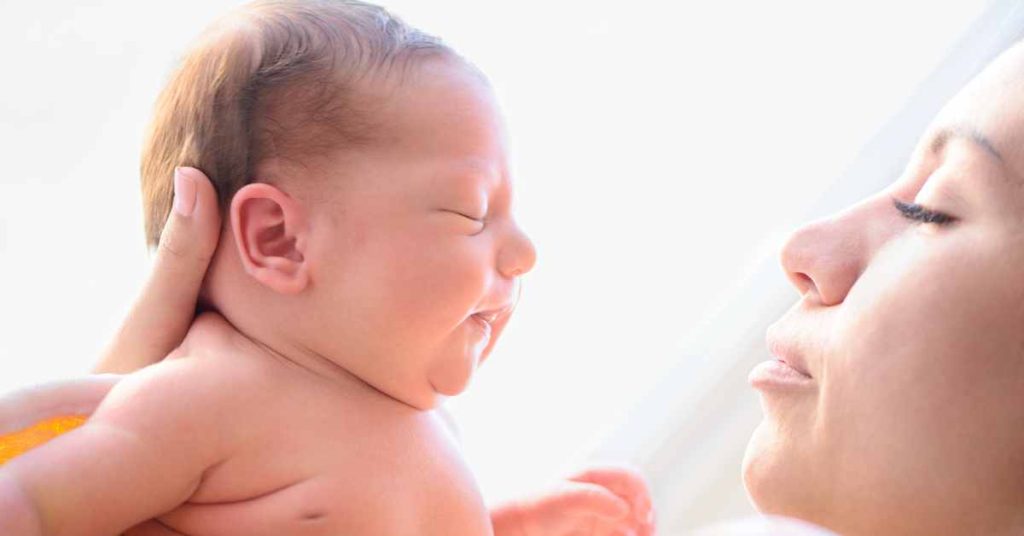The Secret Language of Babies: Understanding Signs of Distress

Babies, in their earliest stages of life, communicate through a rich tapestry of non-verbal cues, a language as profound as it is silent. Understanding this “secret language” is crucial for new parents, caregivers, and anyone involved in the nurturing of infants.
Recognising the subtle signals babies use to express their needs, whether it be hunger, sleepiness, or discomfort, not only prevents distress but also safeguards against potential illnesses or injuries that may not be immediately apparent.
This guide delves into the nuances of infant communication, offering insights into the myriad ways babies convey their feelings and requirements without words. By becoming familiar in this secret language, parents can ensure a happier, healthier, and more harmonious life for your little ones, establishing a bond of understanding and empathy from the very beginning.
Understanding Your Baby’s Cues
Babies are born communicators, relying entirely on non-verbal cues to express their myriad needs and feelings. This form of communication encompasses everything from the tiniest grimace of discomfort to the most joyful flailing of tiny limbs. Understanding these cues requires not just observation but also a deep intuition, a sense that develops and strengthens with time spent caring for the baby.
Parents and caregivers learn to decipher these signals, recognising the difference between a cry of hunger and one of fatigue, or the subtle signs that indicate a nappy change is important.
This section will explore the fascinating world of non-verbal communication in babies, highlighting how innate parental instincts play a pivotal role in understanding and responding to a baby’s unspoken needs.

Overview of non-verbal communication in babies:
- Facial expressions: From contentment to distress, learning to read what your baby is feeling through their face.
- Body language: How babies use their whole body to communicate, from comfort-seeking behaviors to signs of discomfort.
- Crying: Understanding the different types of cries and what they might mean.
- Sounds and coos: Interpreting the sounds babies make beyond crying, including contentment and curiosity.
The role of intuition in understanding your baby’s needs:
- Tuning into your instincts: Developing a ‘gut feeling‘ for what your baby needs.
- The learning curve: How experience with your baby sharpens your ability to interpret their cues.
- Building confidence: Trusting in your abilities to understand and meet your baby’s needs.
- The importance of being present: How active engagement and attentiveness amplify intuitive understanding.
Common Signs of Distress in Babies
Interpreting a baby’s signs of distress is a critical skill for any caregiver, allowing for the swift identification and alleviation of discomfort. Babies, unable to verbalize their needs, communicate distress through a variety of signals and behaviors. Recognising these cues can significantly enhance a caregiver’s ability to provide for and soothe their infant.
From the universal hunger cry to the less decipherable signs of overstimulation, understanding these signals is key to nurturing a happy, healthy baby.
This section outlines the most common signs of distress, providing parents and caregivers with the knowledge needed to respond effectively to their baby’s unspoken messages.

- Rooting reflex: The baby turns their head towards anything that strokes their cheek or mouth, searching for food.
- Sucking fingers or fists: An instinctual behavior indicating the need to feed.
- Becoming more alert: Waking up and moving around more, indicating it’s time for a feeding.
- Yawning: A clear sign of tiredness, signaling it’s time to start the bedtime routine.
- Rubbing eyes: An indication of fatigue, often accompanied by fussiness in younger babies.
- Fussiness: General unease can suggest that the baby is tired and may need help settling down.
- Turning away: Avoiding eye contact or interaction, indicating a need for a quieter environment.
- Arching back: A sign of discomfort, possibly from too much noise, light, or activity.
- Crying: A sudden onset of crying in a previously content baby can indicate overstimulation.
- Squirming: Restlessness can suggest discomfort, such as a wet diaper or a need to be repositioned.
- Grimacing: Facial expressions that indicate something is unpleasant or painful.
- Fussiness: General distress can often mean the baby is uncomfortable in some way.
- Sharp cry: A sudden, intense cry different from the baby’s usual crying patterns can indicate pain.
- Pulling up legs: A reflex action to abdominal pain, often seen with gas or colic.
- Facial grimacing: Tightening of the facial muscles that can accompany cries of pain.
Decoding Baby’s Emotional States

The emotional world of a baby is vivid and complex, with their initial form of expressing feelings and desires being entirely through non-verbal cues. Understanding these cues is pivotal for caregivers and parents aiming to respond sensitively to their baby’s emotional states. Decoding these signals allows for a deeper connection between parent and child, promoting a sense of security and well-being in the baby.
-
Happiness and contentment signs:
- Cooing: Soft, throaty sounds that indicate your baby is content and happy.
- Relaxed posture: A calm body without stiff limbs, often accompanied by a gentle, content facial expression.
- Smiling: Babies begin to smile in response to external stimuli or to express joy from around six weeks of age.
-
- Clinging: Babies may grasp tightly at their parent’s clothing or skin when feeling scared or uncertain.
- Crying: While babies cry for various reasons, a sudden onset of crying in a previously calm situation may indicate fear.
- Avoiding eye contact: A sign that the baby is feeling overwhelmed and may need a quieter or more comforting environment.
-
- Red face: The physical strain from crying or yelling can cause a baby’s face to become flushed.
- Crying: Intense crying can be a sign of frustration, especially if the baby’s needs or desires are not being met.
- Thrashing movements: Physical expressions of frustration may include kicking legs or waving arms erratically.
Physical Indicators of Illness or Injury
Recognising the physical indicators of illness or injury in babies is essential for providing timely care and ensuring their well-being. Unlike adults, infants cannot verbally communicate their discomfort or pain, making it crucial for caregivers to be vigilant about any signs that suggest health issues.
This knowledge empowers parents to seek appropriate medical attention when necessary, potentially preventing minor issues from escalating into serious problems. From the warmth of a feverish brow to the subtle changes in feeding patterns, this section outlines the critical signs that indicate a baby might be experiencing illness or injury, serving as a guide for parents to respond effectively to their baby’s physical state.

- Hot to touch: The baby’s forehead, back, or stomach feels warmer than usual.
- Flushed cheeks: A noticeable redness in the face can be a sign of fever.
- Lethargy: The baby seems unusually sleepy or less active, which may indicate the body is fighting an infection.
- Unusual rash: Any sudden appearance of spots, bumps, or discoloration on the skin should be monitored and possibly assessed by a healthcare provider.
- Persistent crying: Continuous or more intense crying can be a sign of discomfort or pain associated with an infection.
- Change in feeding patterns: A sudden decrease in appetite or difficulty feeding might indicate illness.
- Avoidance of using a limb: If a baby suddenly stops using an arm or leg, or cries when it is moved, this could indicate an injury.
- Crying when touched in a specific area: This reaction suggests that the touched area is causing pain, potentially pointing to an injury or sore spot.
Strategies for Responding to Your Baby’s Cues
Effectively responding to your baby’s cues not only addresses their immediate needs but also strengthens the bond between child and caregiver. This connection, built on trust and understanding, forms the foundation for a baby’s emotional and physical development.
Recognising and acting upon your baby’s signals of distress with appropriate strategies can alleviate their discomfort and prevent further issues. Whether it’s applying comforting techniques at home or determining when professional medical advice is needed, knowing how to respond is crucial.

Immediate steps to take for common signs of distress:
- Check for basic needs: Ensure the baby is not hungry, does not have a dirty diaper, and is not too hot or too cold.
- Offer comfort: Hold, rock, or gently pat your baby to provide reassurance and comfort.
- Create a calming environment: Reduce stimuli by dimming lights, reducing noise, and offering a quiet, comfortable space.
When to try comforting at home vs. when to seek medical attention:
- Comfort at home: If the baby’s distress seems related to hunger, tiredness, or overstimulation, try comforting techniques and closely monitor their response.
- Seek medical attention: If you observe signs of fever, unusual rash, persistent crying without a discernible cause, or if the baby is unresponsive to comforting attempts, it’s essential to seek medical advice.
Tips for calming an overstimulated or distressed baby:
- Use white noise: A steady, soothing sound can help mimic the womb environment and calm a baby.
- Swaddle: For newborns, swaddling can provide a sense of security and warmth.
- Offer a pacifier: Sucking can have a soothing effect on babies, helping to calm them down.
- Keep moving: Gentle rocking, swaying, or taking a walk can help soothe a distressed baby.
- Practice patience: Sometimes, finding the right strategy takes time and experimentation, so remain calm and patient as you try different methods to soothe your baby.

Our Baby First Aid Courses
Our baby first aid courses are available in person in your home and online. We run classes in your home with groups of 2, 4 or up to 10 in Sydney & Melbourne and you can book in 3 easy steps!
- Pick your class
- Follow the prompts to purchase
- We will contact you within 24 hours to lock in your date of choice
Our First Aid Certificate Courses
We run most of the popular first aid courses Australia wide. HLTAID011 Provide First Aid, HLTAID009 Provide CPR, HLTAID012 Provide First Aid in an Education & Care Setting, Mental Health first aid and CPR/LVR to name a few.
Book your public spot online or contact us if you have a group of 5+ people for onsite training.
Here are some other resources you may enjoy!
FREE GUIDE: Your Virtual Baby First Aid Kit
FREE GUIDE: Introducing Common Allergy Foods & Allergic Reactions
FREE Workplace Emergency Preparedness Plan: Grab this at the bottom of every page!
Follow for baby & child first aid and allergy info and tips on Instagram, TikTok & Facebook all @thenestcpr
